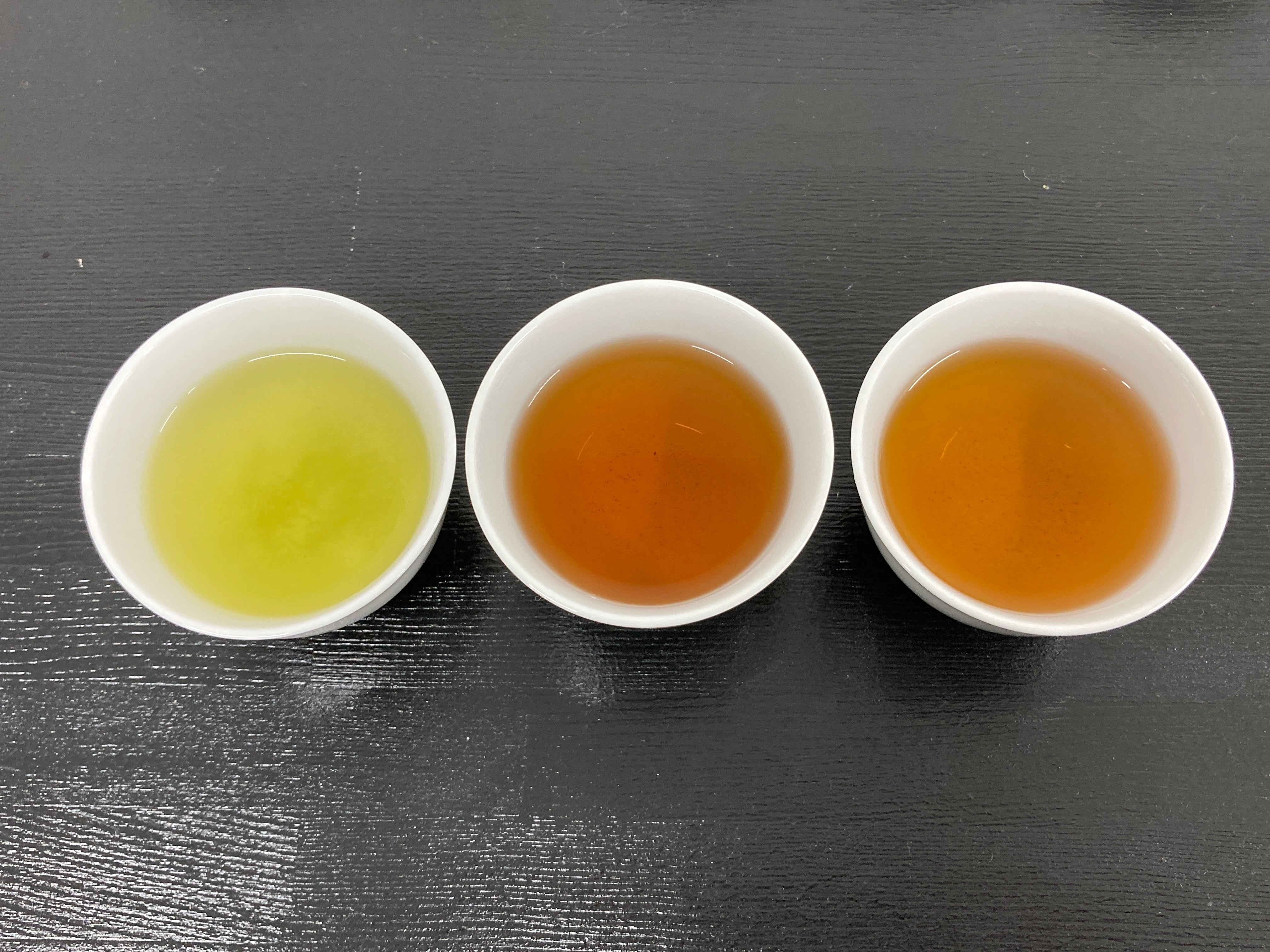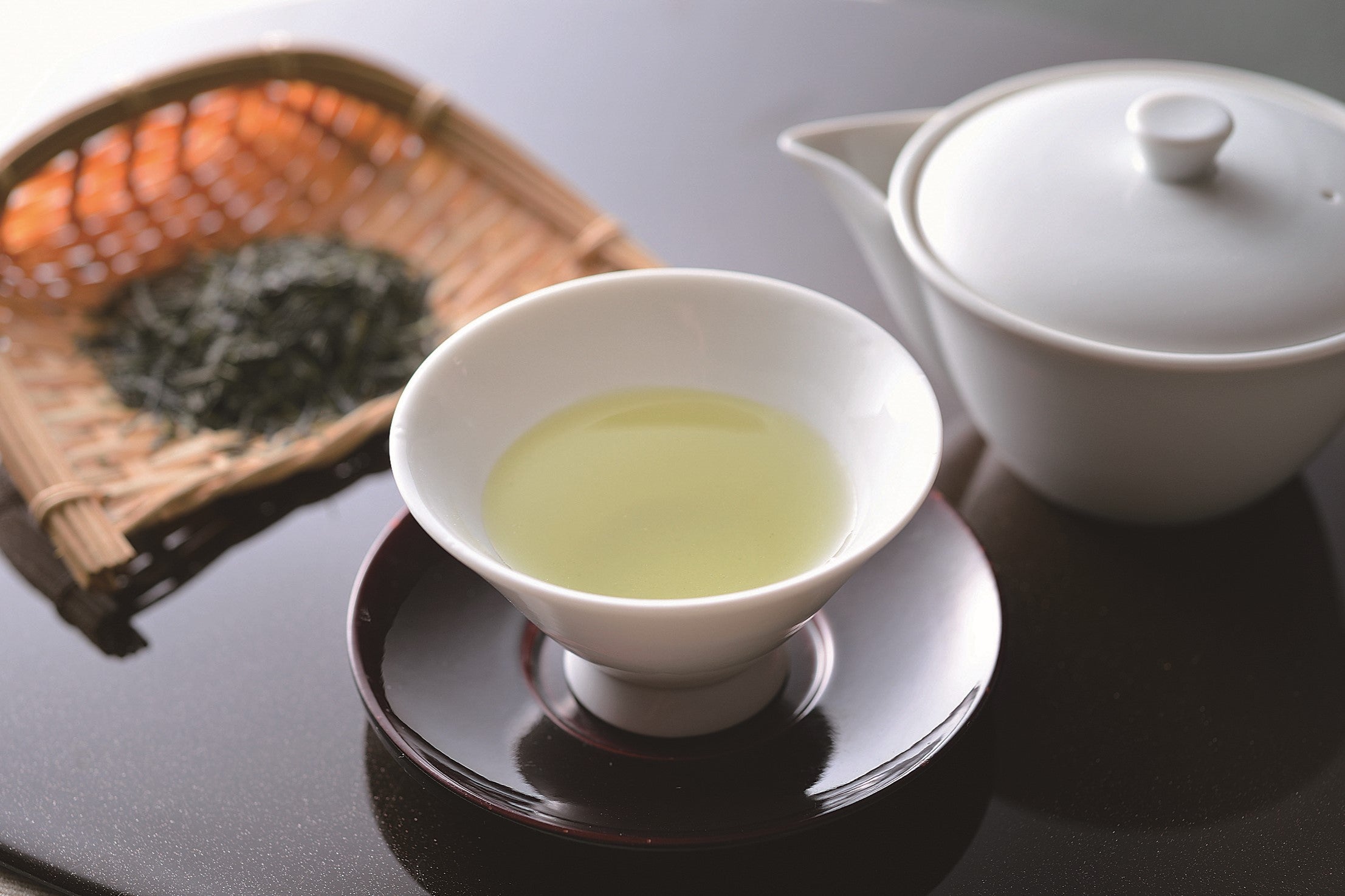Article: Easy Classification of Tea

Easy Classification of Tea
There are many different types of tea around the world including teas such as Japanese kombucha and dokudami tea. However, all true teas are originally made with leaves harvested from a single plant species called Camellia sinensis, a species of evergreen shrubs or small trees in the flowering plant family Theaceae.
Classification of tea based on the degree of fermentation
Tea can be classified into three categories based on the degree of fermentation: green tea (non-fermented), oolong tea (semi-fermented) and black tea (fully fermented).

Non-fermented
Most Japanese green teas are often referred to as non-fermented teas. They are immediately steamed, roasted or heated right after harvesting to stop the oxidation process. Japanese green teas can also be classified into mushi-sei teas (Japanese-style steaming method) or kamairi-sei teas (Chinese-style pan-firing method), depending on the method used to stop oxidation.
Semi-fermented
Oolong teas are often referred to as semi-fermented tea. They undergo partial oxidation after the leaves are picked. Oolong teas are generally divided into two categories depending on the level of oxidation: baozhong teas (lightly oxidised teas) and other oolong teas (strongly oxidized teas).
Fully fermented
Black teas are often described as fully fermented (oxidized) teas.
※Post-fermented teas that have undergone microbial fermentation using both mold, lactic acid bacteria and other microorganisms for a given period of time after they have been steamed, may be classified as non-fermented because the leaves are first steamed.
Classification of tea based on the cultivation method and the manufacturing process
Japanese tea is divided into different types depending on differences in the cultivation method and manufacturing process. It includes Sencha, Gyokuro, Kabusecha, Tamaryokucha, Hikicha (the raw material for Matcha), Matcha and Bancha.
There are other types of Japanese tea made from parent tea types such as Hojicha, a roasted sencha or bancha, and Genmaicha, a mixture of green tea and roasted brown rice.
Classification of tea depending on the time of harvest
| Kagoshima Prefecture | Shizuoka Prefecture | Kyoto Prefecture | |
| Ichibancha | From early April to early May | From mid-April to mid-May | From early May to late May |
| Nibancha | From early June to late June | From mid-June to mid-July | From late June to early July |
| Sanbancha | From mid-July to early August | From late July to early August | - |
| Yonbancha (Autumn-winter Bancha) | From mid-September to early October | From late September to early October | From late August to mid-September |
After the leaves have been picked, new tea buds begin to sprout. In Japan, farmers harvest the tea between two to four times per year and classify tea according to the picking time.
The eighty‐eighth day from the beginning of spring (Hachijyu-Hachiya) marks the optimal time for the first harvest of the season. After the leaves have been picked for the first flush, new buds start growing and after a waiting period of about 45 days, new leaves are ready for the second harvest. The third harvest is then cropped 45 days after the second crop and the fourth 45 days after the third crop.
※February 4 marks approximately the beginning of Spring (risshun 立春) according to the traditional lunisolar calendar. The 88th day counting from risshun is around May 2nd.




Leave a comment
This site is protected by hCaptcha and the hCaptcha Privacy Policy and Terms of Service apply.